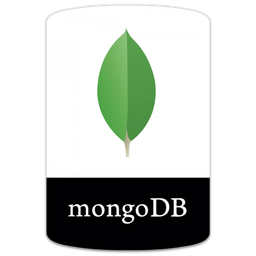MongoDB
MongoDB is an open-source document-oriented database. It is used to store a larger amount of data and also allows you to work with that data. MongoDB is not based on the table-like relational database structure but provides an altogether different mechanism for storage and retrieval of data, that’s why known as NoSQL database. Here, the term ‘NoSQL’ means ‘non-relational’. The format of storage is called BSON ( similar to JSON format).

Core Features Of MongoDB
MongoDB’s document data model naturally supports JSON and its expressive query language is simple for developers to learn and use. Functionality such as automatic failover, horizontal scaling, and the ability to assign data to a location are built-in.
Radically simplify your data infrastructure with an application data platform that powers your transactional, search, mobile, and real-time analytics workloads on any cloud.
Schema-less Database
It is the great feature provided by the MongoDB. A Schema-less database means one collection can hold different types of documents in it. Or in other words, in the MongoDB database, a single collection can hold multiple documents and these documents may consist of the different numbers of fields, content, and size. It is not necessary that the one document is similar to another document like in the relational databases. Due to this cool feature, MongoDB provides great flexibility to databases.
Document Oriented
In MongoDB, all the data stored in the documents instead of tables like in RDBMS. In these documents, the data is stored in fields(key-value pair) instead of rows and columns which make the data much more flexible in comparison to RDBMS. And each document contains its unique object id.
Indexing
In MongoDB database, every field in the documents is indexed with primary and secondary indices this makes easier and takes less time to get or search data from the pool of the data. If the data is not indexed, then database search each document with the specified query which takes lots of time and not so efficient.
Scalability
MongoDB provides horizontal scalability with the help of sharding. Sharding means to distribute data on multiple servers, here a large amount of data is partitioned into data chunks using the shard key, and these data chunks are evenly distributed across shards that reside across many physical servers. It will also add new machines to a running database.
Replication
MongoDB provides high availability and redundancy with the help of replication, it creates multiple copies of the data and sends these copies to a different server so that if one server fails, then the data is retrieved from another server.
Aggregation
It allows to perform operations on the grouped data and get a single result or computed result. It is similar to the SQL GROUPBY clause. It provides three different aggregations i.e, aggregation pipeline, map-reduce function, and single-purpose aggregation methods
High Performance
The performance of MongoDB is very high and data persistence as compared to another database due to its features like scalability, indexing, replication, etc.
In MongoDB server, you are allowed to run multiple databases.
Get in touch
Contact Us, we are here to listen from you
In MongoDB server, you are allowed to run multiple databases.
Contact us1
It is a schema-less NoSQL database. You need not design the schema of the database when you are working with MongoDB.
2
It does not support join operation.
3
It provides great flexibility to the fields in the documents.
4
It contains heterogeneous data.
5
It provides high performance, availability, scalability.
6
It supports Geospatial efficiency.
7
It is a document-oriented database and the data is stored in BSON documents.
8
It also supports multiple document ACID transitions (string from MongoDB 4.0).
9
It does not require any SQL injection.
10
It is easily integrated with Big Data Hadoop
Disadvantages
There is also some limitations
It uses high memory for data storage.
You are not allowed to store more than 16MB data in the documents.
The nesting of data in BSON is also limited you are not allowed to nest data more than 100 levels.
